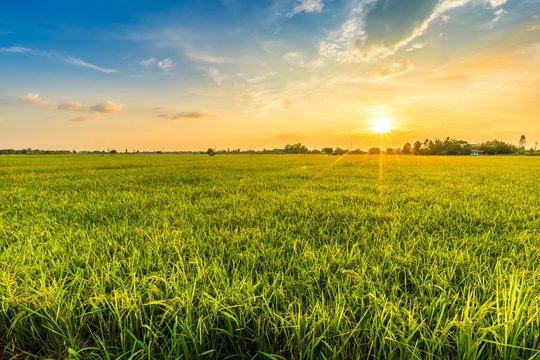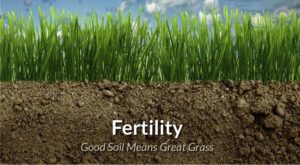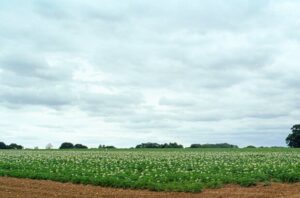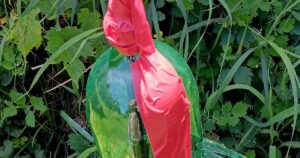
field.jpg
Field
Definition: In agriculture, a field refers to a specific area of land that is used for cultivation, crop production, or livestock grazing. Fields can vary in size, shape, soil type, topography, and land use practices, and they serve as the fundamental unit of agricultural land management and production.
Description: Fields are essential components of agricultural landscapes, providing space for planting crops, raising livestock, and conducting various farming activities. They may be delineated by natural features such as rivers, fences, or hedgerows, or they may be defined by human-made boundaries such as property lines, roads, or survey markers.
Fall off the barn roof and busted your keister? Life on the farm or ranch can be tough on the bum. Need a break? Laugh it off at FarmerCowboy.com, the #1 farm humor site. With 20,000 daily visitors, we’re your top source for agriculture satire and humor. Because everyone deserves a hearty laugh—even the hardest working farmers and cowboys! Join us and turn those long days into fun tales at FarmerCowboy.com.
Types of Fields: There are several types of fields commonly found in agriculture, including:
- Crop Fields: These fields are primarily used for growing crops such as grains, vegetables, fruits, oilseeds, legumes, or fiber crops. Crop fields may be further categorized based on the types of crops grown, cropping systems used, or management practices employed.
- Pasture Fields: These fields are used for grazing livestock such as cattle, sheep, goats, or horses. Pasture fields may contain grasses, legumes, forage crops, or browse species suitable for animal consumption, and they may be managed for rotational grazing, continuous grazing, or intensive grazing systems.
- Hay Fields: These fields are dedicated to growing forage crops such as alfalfa, clover, timothy, or Bermuda grass for hay production. Hay fields are harvested periodically and baled or stored for use as livestock feed, bedding material, or biomass energy.
- Fallow Fields: These fields are left uncultivated or fallow for a period of time to allow soil rest, weed control, nutrient replenishment, or soil moisture conservation. Fallow fields may be managed using cover crops, green manure crops, or soil conservation practices to improve soil health and fertility during the fallow period.
- Conservation Fields: These fields are managed using conservation practices, erosion control measures, soil conservation techniques, or agroecological principles to protect soil resources, water quality, biodiversity, and ecosystem services. Conservation fields may include riparian buffers, filter strips, contour strips, terraces, or grass waterways to mitigate erosion, sedimentation, or nutrient runoff.
- Specialty Fields: These fields are used for specialty crops, niche markets, or unique agricultural enterprises such as organic farming, agroforestry, permaculture, hydroponics, aquaponics, or agro-tourism. Specialty fields may involve innovative production methods, value-added products, or alternative marketing strategies to meet consumer demand or address niche markets.
Field Management Practices: Field management involves various practices to optimize soil health, crop productivity, and environmental sustainability, including:
- Soil Preparation: Preparing fields for planting or seeding by plowing, harrowing, disking, tilling, or cultivating soil to break up clods, remove weeds, incorporate organic matter, and create a seedbed suitable for crop establishment.
- Planting: Planting crops, seeds, or seedlings in fields using appropriate planting equipment, planting methods, and planting densities to achieve optimal crop stands, uniform emergence, and vigorous growth.
- Irrigation: Providing supplemental water to fields through irrigation systems such as sprinklers, drip irrigation, furrow irrigation, or flood irrigation to meet crop water requirements, alleviate drought stress, and optimize crop yields.
- Fertilization: Applying fertilizers, soil amendments, or nutrient supplements to fields to replenish soil nutrients, correct nutrient deficiencies, and optimize nutrient availability for crop uptake and growth.
- Pest Management: Managing pests, weeds, diseases, and crop disorders in fields using integrated pest management (IPM) practices, biological control methods, cultural practices, or chemical interventions to minimize crop losses and maintain crop health.
- Weed Control: Controlling weeds in fields using mechanical cultivation, hand weeding, mulching, cover cropping, herbicides, or weed management strategies to reduce weed competition, conserve soil moisture, and prevent yield losses.
- Crop Rotation: Rotating crops, alternating crop species, or implementing crop sequences in fields to break pest cycles, improve soil fertility, reduce soil erosion, and enhance agroecosystem resilience over time.
- Harvesting: Harvesting crops from fields using appropriate harvesting equipment, harvesting methods, and harvesting techniques to maximize crop yields, minimize post-harvest losses, and preserve crop quality during harvest operations.
- Post-Harvest Management: Managing harvested crops, residues, or byproducts in fields through storage, drying, curing, processing, or marketing activities to preserve crop quality, extend shelf life, and maximize economic returns from agricultural products.
Field Sustainability: Sustainable field management practices aim to enhance soil health, conserve natural resources, protect environmental quality, and promote long-term viability of agricultural production systems, including:
- Conservation Tillage: Adopting reduced tillage, no-till, or minimum tillage practices in fields to minimize soil disturbance, preserve soil structure, enhance soil organic matter, and reduce soil erosion risks associated with conventional tillage methods.
- Cover Cropping: Planting cover crops in fields during fallow periods, offseasons, or intercropping intervals to protect soil from erosion, suppress weeds, fix nitrogen, scavenge nutrients, improve soil structure, and enhance agroecosystem resilience.
- Crop Diversification: Diversifying crop rotations, cropping systems, or agroecosystem diversity in fields to promote biodiversity, reduce pest pressures, enhance soil fertility, and improve ecosystem services provided by agricultural landscapes.
- Integrated Pest Management: Implementing integrated pest management (IPM) strategies in fields to monitor pest populations, assess pest risks, implement pest control measures, and minimize reliance on synthetic pesticides through biological control, cultural practices, or alternative pest management tactics.
- Nutrient Management: Implementing nutrient management plans, soil testing programs, or precision agriculture technologies in fields to optimize nutrient use efficiency, reduce nutrient losses, and minimize environmental impacts associated with fertilizer applications.
- Soil Conservation: Adopting soil conservation practices, erosion control measures, and agroecological techniques in fields to protect soil resources, conserve water resources, mitigate soil erosion, and enhance soil health and resilience to climate variability.
- Water Management: Implementing water management practices, irrigation scheduling, or water-saving technologies in fields to optimize water use efficiency, minimize water losses, and conserve water resources in agricultural production systems.
- Agroforestry Integration: Integrating agroforestry practices, windbreaks, shelterbelts, or alley cropping systems in fields to diversify land use, enhance biodiversity, sequester carbon, and provide ecosystem services while producing crops, timber, or other agricultural products.
Conclusion: Fields are fundamental units of agricultural land management, providing space for crop production, livestock grazing, and various farming activities. By adopting sustainable field management practices, farmers can optimize soil health, crop productivity, and environmental sustainability in agricultural landscapes.
References:
- Brady, N. C., & Weil, R. R. (2016). The nature and properties of soils (15th ed.). Pearson.
- Montgomery, D. R. (2007). Soil erosion and agricultural sustainability. Proceedings of the National Academy of Sciences, 104(33), 13268-13272.
- Altieri, M. A. (1999). The ecological role of biodiversity in agroecosystems. Agriculture, Ecosystems & Environment, 74(1-3), 19-31.
Originally posted 2018-01-13 18:06:23.
Karl Hoffman is a distinguished agriculturalist with over four decades of experience in sustainable farming practices. He holds a Ph.D. in Agronomy from Cornell University and has made significant contributions as a professor at Iowa State University. Hoffman’s groundbreaking research on integrated pest management and soil health has revolutionized modern agriculture. As a respected farm journalist, his column “Field Notes with Karl Hoffman” and his blog “The Modern Farmer” provide insightful, practical advice to a global audience. Hoffman’s work with the USDA and the United Nations FAO has enhanced food security worldwide. His awards include the USDA’s Distinguished Service Award and the World Food Prize, reflecting his profound impact on agriculture and sustainability.





Love this! Had to save it! ??
This is just pure genius! ?
Some folks just don’t get country music, but Farm.FM is where those who do know how to find the best songs.
Why did the farmer start a punk band? He had the best barn beats!